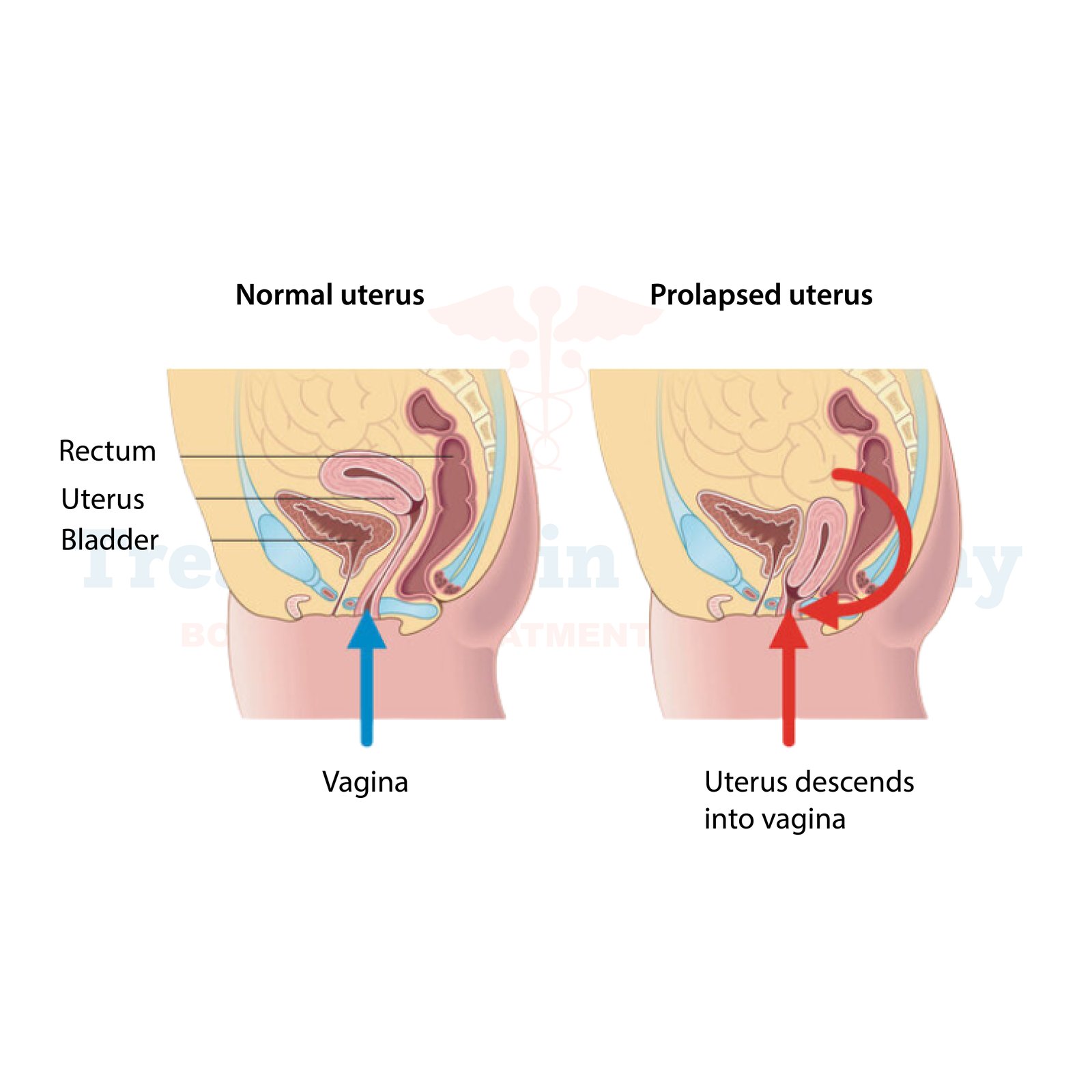What is Uterine Prolapse?
Uterine prolapse is a condition where the uterus descends from its normal position in the pelvic cavity and protrudes into the vagina. It occurs when the pelvic floor muscles and ligaments weaken, often due to factors such as childbirth, aging, obesity, chronic coughing, or straining during bowel movements.
Side Effects of Uterine Prolapse:
The symptoms of uterine prolapse can vary in severity and may include:
- Feeling of heaviness or pressure in the pelvic area: Patients may experience a sensation of something bulging into the vagina.
- Backache or pelvic pain: Discomfort may be felt in the lower back or pelvic region.
- Urinary issues: These may include urinary incontinence, frequent urination, or difficulty emptying the bladder completely.
- Bowel problems: Constipation or difficulty with bowel movements may occur.
- Sexual dysfunction: Some individuals may experience pain during intercourse or a decreased sensation.
How is Uterine Prolapse Diagnosed?
To diagnose uterine prolapse, your doctor will likely perform a pelvic examination. During this exam, they will assess the position of the uterus and the degree of descent into the vagina. Additional tests such as pelvic ultrasound or MRI may be ordered to evaluate the extent of the prolapse and rule out other conditions.
Potential Treatments of Uterine Prolapse:
- Conservative Management: For mild cases, lifestyle modifications such as pelvic floor exercises (Kegels), maintaining a healthy weight, and avoiding heavy lifting may help alleviate symptoms.
- Pessary: A pessary is a removable device inserted into the vagina to provide support to the prolapsed uterus. It can be an effective non-surgical treatment option for those who wish to avoid surgery or are not suitable candidates for it.
- Surgical Intervention: If conservative measures fail to provide relief or in cases of severe prolapse, surgery may be recommended. Surgical options include hysterectomy (removal of the uterus), uterine suspension procedures, or repairs of the pelvic floor muscles and ligaments.
- Pelvic Floor Physical Therapy: Working with a pelvic floor physical therapist can be beneficial in strengthening the pelvic floor muscles and improving symptoms associated with uterine prolapse.
👉 Contact us for further information and receive acomplimentary consultation.

.webp)
.webp)
 (1).webp)
 (1).webp)

.webp)
.webp)
 (1).webp)
 (1).webp)
